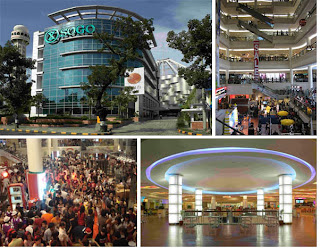At the end of last year, I shared the results of my efforts in the stock market and also my strategy to grow wealth and augment income in the new year. Quite a few things have happened since then. So, I decided to do a review of how things have moved.
In the S-REITs department, the biggest change this year to my portfolio has to be the major divestment in Sabana REIT. My current long position in the REIT is just a bit more than 10% of my investment at its largest. Whatever I have left is free of cost and will continue to generate passive income although on a much smaller scale.

Also in the S-REITs department, I took part in AIMS AMP Capital Industrial REIT's rights issue and tried to get more excess rights but without much success. Recently, I sold a small percentage of my investment, believing that it was the right thing to do as its unit price ran up, post rights. This REIT is still my largest investment in S-REITs. Having said this, passive income received from this REIT will shrink some 15% this year, given the dilution from the recent rights issue.
In the Business Trusts department, I decided to divest completely my investment in Perennial China Retail Trust after receiving another round of income distribution which I concluded was unsustainable. This was before the takeover offer by St. James.
Also in the Business Trusts department, in late January, I more than doubled my investment in Croesus Retail Trust, believing that, trading at a discount to valuation and offering an attractive income distribution, it is a more dependable passive income generator than Perennial China Retail Trust. Although its relatively high level of gearing is a concern for some, there is unlikely to be any nasty surprises in the area of financing over the next few years.
In other stocks, I added to my long positions in Yongnam and Hock Lian Seng. Yongnam hit a rough patch, as expected. However, things are likely to improve later this year and probably the next. It is a leader in what it does and it has a very good track record. Last year's performance was exceptionally bad and probably would not be repeated. I like how Yongnam started to pay meaningful dividends in recent years and this is likely to continue, conditions permitting.
Hock Lian Seng, like Yongnam, is in the construction sector and also like Yongnam, I expect it to be a beneficiary of increased spending on infrastructure projects in the country. Already, Hock Lian Seng won two major projects which have bumped up its order book and will provide earnings visibility for some time to come. There will probably be more order wins in future. Of course, Hock Lian Seng also pays meaningful dividends which I like.
One stock which I have been waiting for an opportunity to accumulate was CapitaMalls Asia. Well, it is a pity that it will be taken private by its parent, CapitaLand, which offered $2.22 a share. I feel that it is a fair enough price which, perhaps, suggests that the price at IPO was unfair but I will let readers draw their own conclusions in this contentious issue. My acceptance form has been sent out.
A stock which I have turned more cautious on is Marco Polo Marine. Recent developments mean that the business is now somewhat different from what I envisioned it to be in my initial investment thesis. Not giving enough consideration to how the tugs and barges could be a drag on overall performance before, I decided to trim my exposure to the stock. Things could improve in future but, for now, the level of clarity has lowered.
The first few months of the year have turned out to be a bit more eventful than expected on the investment front. My war chest is now fuller through some divestments as well as dividends received. I do not have any immediate plans for the funds and I will probably just hold on to them for now. After all, I had felt that I was too much invested in the stock market and had desired a bigger cash position.
Of course, if I were to keep the status quo, I will, for sure, receive a much lower level of income from my investments in S-REITs this year. How much lower? I guess we will know by end of the year.
Having said this, my decision to increase my level of investment in SPH and NeraTel last year so that my overall portfolio is less reliant on S-REITs for passive income was pre-emptive. Enlarging investments in Hock Lian Seng and Croesus Retail Trust earlier this year has also helped to reduce reliance on S-REITs for passive income.
What next? I certainly do not know if the economy will do well or if it would suffer a decline in the next few years. However, I do know that I am staying invested as long as my investments have reasonably sturdy fundamentals and, preferably, are able to generate reasonably good income for me. They don't have to be stellar performers and I don't have a problem with getting rich slowly.
I will simply wait for Mr. Market to feel depressed enough to sell more to me at prices I cannot refuse while I collect regular dividends in the meantime.
Related posts:
1.
A strategy to grow wealth and augment income.
2.
Sabana REIT: 1Q 2014 DPU 1.88c.
3.
AIMS AMP Capital Industrial REIT: $1.425.
4.
Perennial China Retail Trust: Fully divested.
5.
Croesus Retail Trust: DPU above forecast.
6.
Yongnam: DPS of 0.6c.
7.
Hock Lian Seng: $221.8 million contract.
8.
CapitaMalls Asia: Farewell.
9.
Marco Polo Marine: Price weakness.
10.
SPH: Within expectations.
11.
NeraTel: A very good investment.

















































